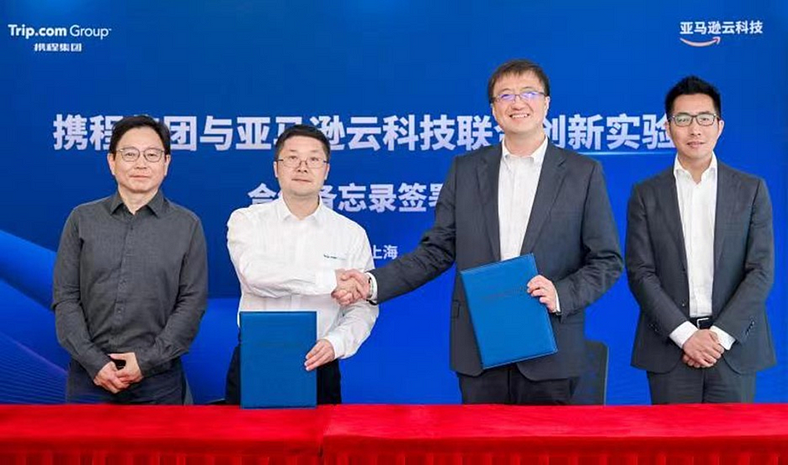
Introduction
The travel industry has undergone significant changes in recent years, with technological advancements and the rise of digital platforms. With competition increasing, providing a good user experience has become essential for travel companies to retain customers. Large models, also known as artificial intelligence models, have shown immense potential to improve user experience in the travel industry. This article will explore the possibility of large models to enhance user experience in the travel industry and discuss future scenarios for the industry.
Large Models in the Travel Industry

Large models refer to artificial intelligence models trained on large amounts of data to learn patterns and make predictions. In the travel industry, large models can be used for various purposes, such as predicting flight delays, optimising pricing strategies, and enhancing personalisation. The advantages of using large models in the travel industry include improved accuracy in predicting customer behaviour, increased efficiency, and reduced costs. However, some disadvantages exist, such as the need for significant computing power and data storage, which can be expensive.
Several successful implementations of large models in the travel industry exist. One example is the use of chatbots for customer service. Chatbots can provide 24/7 support to customers, and they can use large models to learn from previous interactions to improve their responses. Another example is using predictive analytics to personalise travel recommendations based on customer preferences and behaviour.
Improving User Experience through Large Models
Personalisation is a critical factor in improving user experience in the travel industry. Large models can personalise travel recommendations based on customer preferences, such as destination, accommodation, and activities. Real-time data and personalised recommendations can improve customer satisfaction and loyalty. For example, large models can analyse weather patterns and give customers personalised advice for indoor activities during inclement weather.
Large models can also enhance safety and security in the travel industry. For instance, large models can analyse patterns of fraudulent activity and identify potential security threats. Large models can also analyse data from various sources, such as social media and news reports, to provide real-time alerts to travellers in emergencies.
Future Scenarios in the Travel Industry
The potential for large models in the travel industry is vast, and the future scenarios for this technology are exciting. Here are two specific examples of how large models could be used to improve the user experience in the travel industry.
During the holiday or other peak travel periods, many popular tourist destinations become overcrowded, leading to long lines and frustrating experiences for travellers. To address this issue, large models could be used to analyse real-time booking data and search data to identify less crowded destinations for travellers to visit. The AI could recommend these destinations to travellers, allowing them to avoid crowds and enjoy a more relaxing trip. This would improve the traveller’s experience and help distribute tourism more evenly, reducing the strain on overcrowded destinations and promoting sustainable tourism.

Another scenario where large models could be used to improve user experience is in the hotel booking process. Travellers often face challenges finding the right hotel for their needs, particularly when travelling with children, seniors, or individuals with disabilities. In this scenario, large models could analyse the traveller’s background information and preferences to recommend suitable hotels based on location and surrounding attractions. The AI could also use real-time data to predict foot traffic around the hotel and nearby attractions, helping travellers make informed travel plans.
In addition to these scenarios, the travel industry will likely see continued innovation in virtual reality, blockchain, and big data. These technologies have the potential to revolutionise the industry and provide travellers with even more personalised and immersive experiences.
Conclusion
In conclusion, large models have significant potential to improve user experience in the travel industry. They can be used for personalisation, real-time data analysis, and enhancing safety and security. The future of the travel industry is likely to be shaped by technological advancements such as virtual reality, blockchain, and big data. However, the industry will face sustainability concerns and increased competition from sharing economy platforms. The travel industry must embrace large models and other new technologies to stay ahead of the competition and provide a good user experience.
Reference
“They will be more likely to survive and thrive. As an ex-strategy consultant and public speaker on digital and technology trends, and now running venture-backed, travel-tech startup Beyonk, here …” https://www.forbes.com/sites/forbesbusinesscouncil/2021/12/27/the-travel-and-tourism-industry-by-2030/
“This desire to build memories, to connect with people, and to see new places drove 1.4 billion of us to travel internationally in 2019. 1 Creating safer travel experiences is now paramount to protect this privilege. Now is a moment of crisis for the travel industry. Available seat miles on US airlines were down 71 per cent in April 2020 …”https://www.mckinsey.com/industries/travel-logistics-and-infrastructure/our-insights/make-it-better-not-ust-safer-the-opportunity-to-reinvent-travel
“亚马逊云和携程成立联合创新实验室,探索大模型落地旅行应用”, 26 Apr 2023, The Paper, https://www.thepaper.cn/newsDetail_forward_22863250
“Share of travellers trusting to use Artificial Intelligence (AI) to plan travel in 2033 worldwide as of August 2022, by travel aspect”, February 2023, Statista, https://www.statista.com/statistics/1381319/expected-use-artificial-intelligence-for-travel-planning-worldwide/